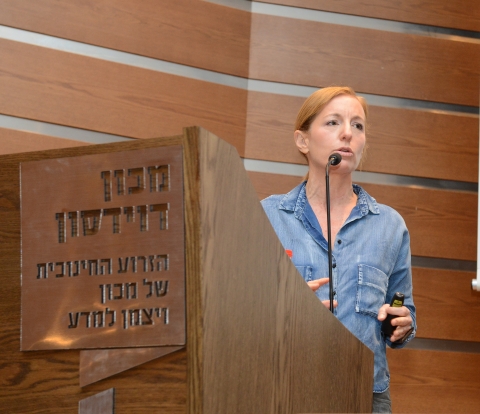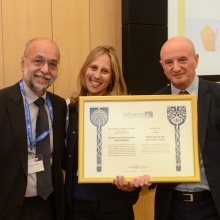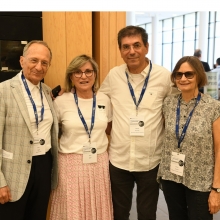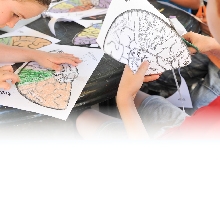Poster girls for physics
Changing the gender paradigm in physics
Briefs
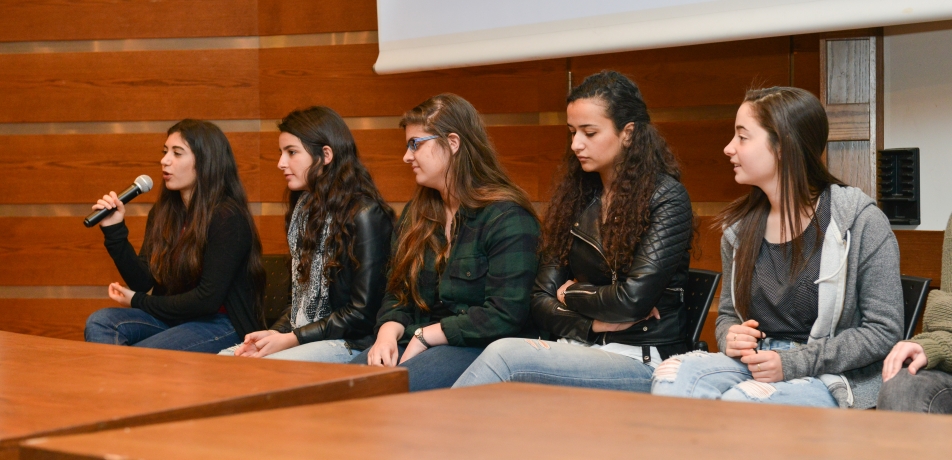
Among his many famous quotations, Albert Einstein once said: “The woman who follows the crowd will usually go no further than the crowd. The woman who walks alone is likely to find herself in places no one has ever been before.”
Nationwide, only 27 percent of all high-level high school physics students are girls. But the new Schwartz/Reisman Science Education Center in Rehovot is doing its best to make the gender split closer to 50-50 in the subject that brought fame to the world’s most famous scientist—a theoretical physicist who had more than a few valuable insights on human nature as well.
Earlier this year, dozens of ninth-grade girls from Rehovot and Nes Ziona
junior high schools gathered to hear why they should pursue physics at the five-point level and thus do their physics coursework at the Center. Prof. Daniel Zajfman, president of the Weizmann Institute and chairman of the Center, spoke to Rehovot students in early February. A week later, Dr. Ronen Mir, the Center's director spoke to the Nes Ziona students.
“Physics is for anyone, regardless of gender, who wants to learn about the world we live in, improve their ability to think, and have doors to many professions open to them,” Prof. Zajfman told the audience.
The Schwartz/Reisman Center is modeled after a successful center of the same name in Tel Aviv, whereby students from all 17 Tel Aviv high schools do their physics and chemistry coursework at the Center, which teaches physics and chemistry at the highest level and prepares them for the matriculation exams at the highest level in those subjects. In addition to the Center in Rehovot, an additional Schwartz/Reisman Center is planned for Rishon L’Zion. The Centers are funded by Canadian friends Gerry Schwartz and Heather Reisman.
The Center in Rehovot is adjacent to the Weizmann Institute and located at the Ruth and Uriel Arnon Science Campus. A total of 770 students are enrolled currently. Some 28 percent of the current physics students are girls.
The “Girls Choose Physics” seminars on February 5 and 12 drew a full auditorium of ninth grade girls and their parents. The Center invited students to come hear about their high school physics major from girls in their junior and senior years of high school who have chosen to study physics and are glad they did.
Girls have broken the gender barrier in almost all subjects—but physics, like math, still tends to be dominated by males. In schools worldwide, elective physics classes still have a long way to go to achieve a more equal representation of the genders. Yet according to the Knesset’s Center for Science and Research, more girls pass the matriculation exams in the STEM subjects (science, technology, engineering, and math) than boys; they get comparable grades as boys in physics; and there are more “A” students among girls than boys in math.
“Not only do I believe that each student needs to achieve his or her potential,” says Dr. Mir, “but I do not believe we can afford to give up on half of our human capital.” He adds that students who pursue the physics matriculation exam at the five-point level open up opportunities for themselves in higher education in engineering, the exact sciences, medicine, biotech, and more.
“I had to choose between biology and physics and I think I made the right choice. The teachers here are great and really care about us. They want us to succeed and will tutor us if we need the extra help. It is a very special environment here at the Schwartz/Reisman Center. Instead of telling us the theories, we do experiments and find out for ourselves,” says Rachel Elran, a student from Rehovot.
The Center is also trying to transform the way girls and their families think of certain professions as oriented toward men. Dr. Naama Charit-Yaary, curator of the Clore Garden of Science at the Weizmann Institute, spoke to the group and described how she dreamed of being an astronaut, which motivated her to study physics. Upon being turned down by NASA, however, she found a new cause: keeping the world safe from nuclear explosions. She is the Israeli representative to the CTBTO - the Comprehensive Nuclear Test-Ban Treaty Organization preparatory commission - and as such, she travels periodically with a team of international scientists testing air, water, and ground in search of evidence of nuclear testing.
The physics program at the Schwartz/Reisman Center is already having an impact on the local schools. "At the De Shalit High School, we are very proud of our augmented physics program – it has become quite a hit among the students and is considered very prestigious," said Revital Bar-Joseph, principal of the school. "In addition, our software engineering section has grown in recent years, and it has a strong physics component. Now, with the opening of the Schwartz/Reisman Center, the students have access to state-of-the-art laboratories and upgraded learning conditions."
